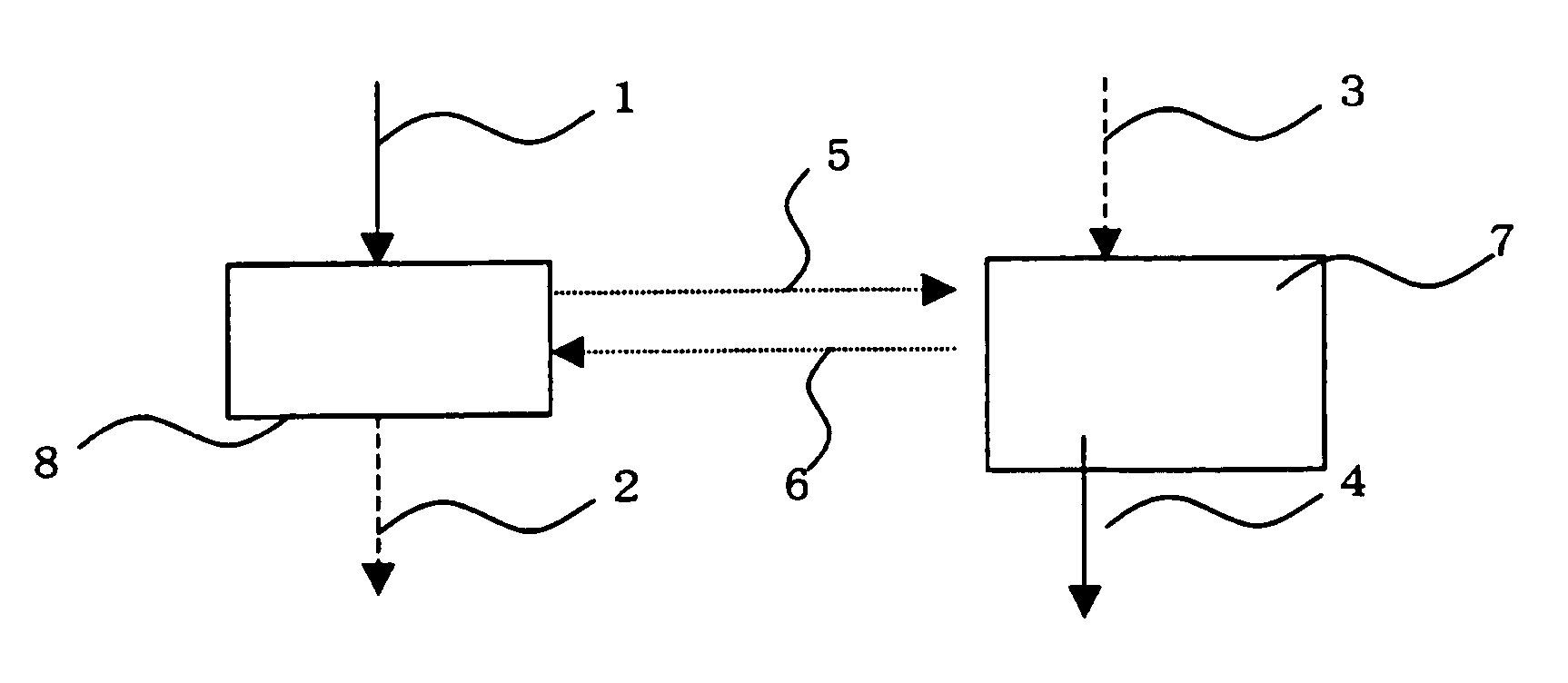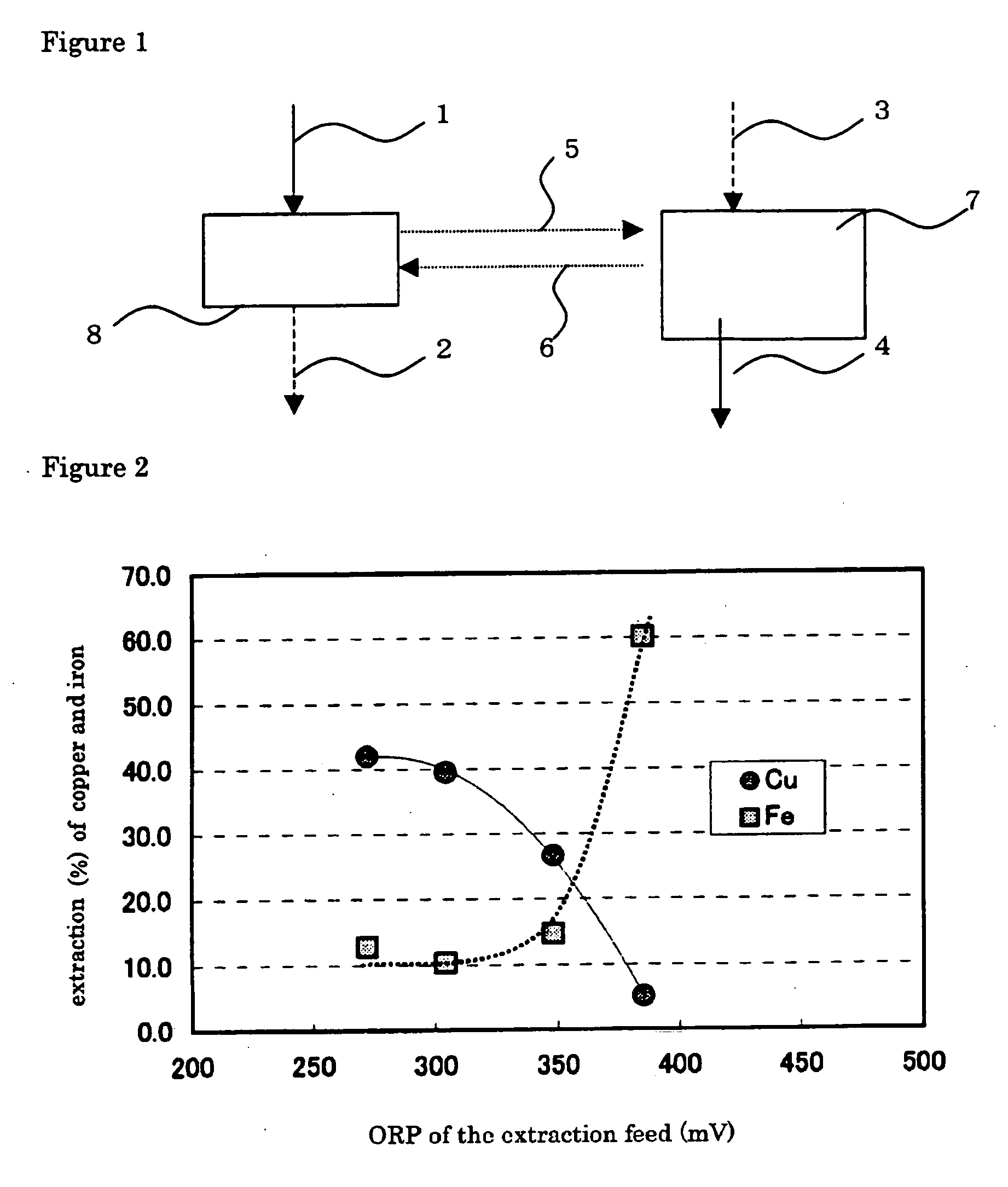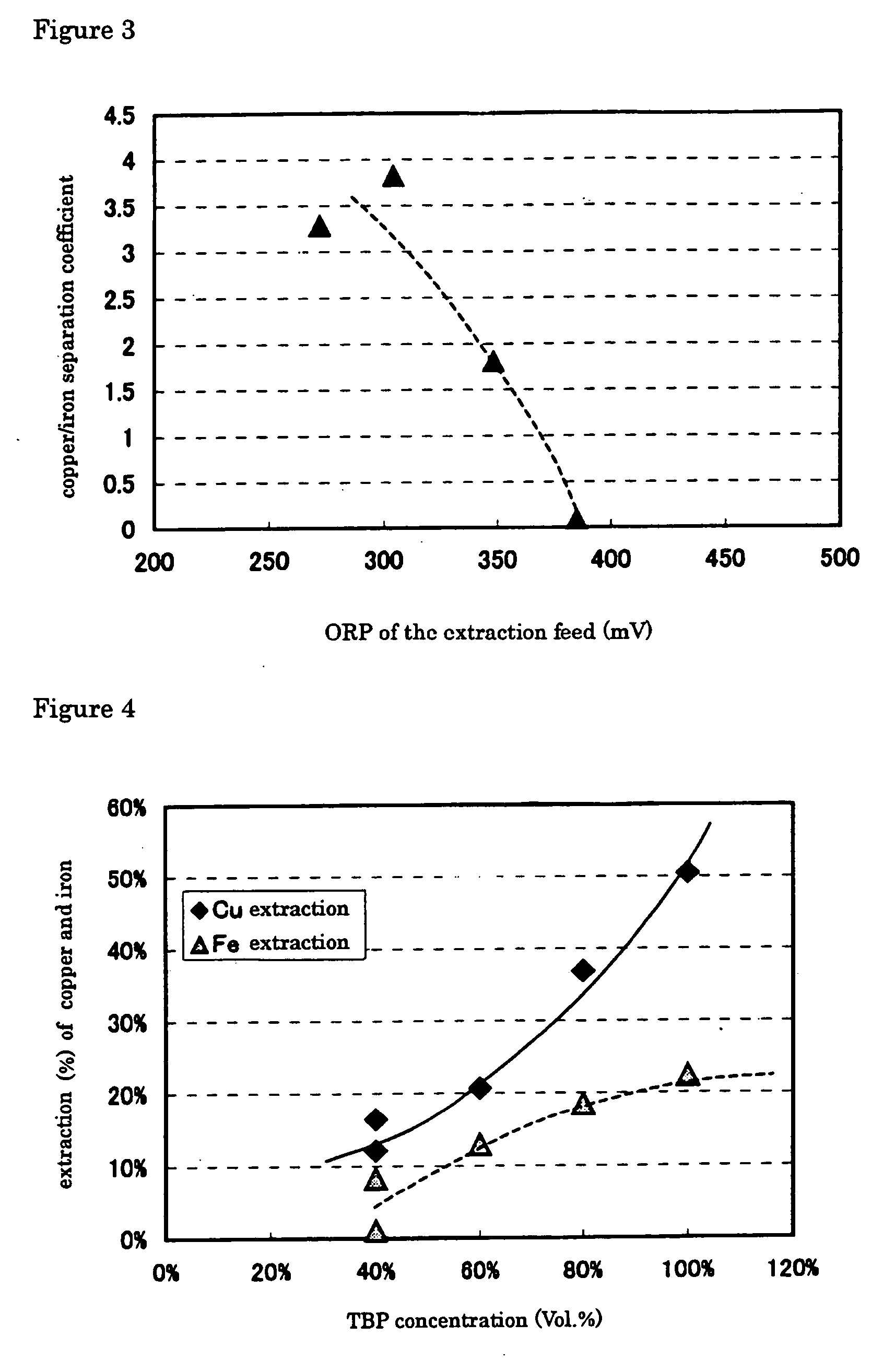Method for extracting copper with solvent
a solvent extraction and copper technology, applied in the direction of solvent extraction, separation processes, copper compounds, etc., can solve the problems of low purity of iron hydroxide, copper loss, accumulation of neutralizing agent components, etc., to keep the extraction yield of copper at a high level and high industrial value
- Summary
- Abstract
- Description
- Claims
- Application Information
AI Technical Summary
Benefits of technology
Problems solved by technology
Method used
Image
Examples
example 1
(1) First Step
[0073] An aqueous solution containing cupric (divalent) chloride and ferric (trivalent) chloride was prepared to have a copper concentration of 50 g / L and iron concentration of 70 g / L as the extraction feed. The solution was then incorporated with common salt to have a chlorine ion concentration of 200 g / L. It was heated at 60° C., and incorporated with iron powder to adjust its oxidation-reduction potential at 275 mV (based on an Ag / AgCl electrode). The solution of adjusted oxidation-reduction potential was mixed with a TBP liquor at room temperature to extract the metallic ions therein to determine copper and iron extraction yields. The mixing was carried out in an inert gas atmosphere with nitrogen to prevent oxidation which could result from vapor-liquid contact at the interface.
[0074]FIG. 2 plots the results of copper and iron extraction yields against oxidation-reduction potential (based on an Ag / AgCl electrode). FIG. 3 plots the Cu / Fe separation coefficient, ...
example 2
[0076] Example 2 was carried out in the same manner as in EXAMPLE 1, except that the extraction feed was adjusted at an oxidation-reduction potential of 300 or 350 mV, to determine copper and iron extraction yields and copper / iron separation coefficient. The results are given in FIGS. 2 and 3.
[0077] Decreasing oxidation-reduction potential from 300 or 350 mV (EXAMPLE 2) to 275 mV (EXAMPLE 1), improved greatly extraction yield of the copper, but extraction yield of the iron ion decrease, as shown in FIG. 2. At the same time, decreasing oxidation-reduction potential from 300 or 350 mV (EXAMPLE 2) to 275 mV (EXAMPLE 1) increases copper / iron separation coefficient, by which is meant that copper is extracted more selectively over iron, as shown in FIG. 3.
example 3
[0078] Example 3 was carried out in the same manner as in EXAMPLE 1, except that a synthesized aqueous solution containing copper at 80 g / L and iron at 50 g / L was used as the extraction feed, where the solution was adjusted at an oxidation-reduction potential of 300 mV, and that diluted solvent with kerosene to have a TBP concentration of 40, 60, 80 or 100% (no dilution) by volume was used, to determine copper and iron extraction yields and copper / iron separation coefficient. The results are given in FIGS. 4 and 5.
[0079] Increasing TBP concentration increases copper extraction yield, but does not change iron extraction yield significantly, as shown in FIG. 4. It is also found that increasing TBP concentration increases copper / iron separation coefficient as shown in FIG. 5.
PUM
| Property | Measurement | Unit |
|---|---|---|
| oxidation-reduction potential | aaaaa | aaaaa |
| oxidation-reduction potential | aaaaa | aaaaa |
| pH | aaaaa | aaaaa |
Abstract
Description
Claims
Application Information
 Login to View More
Login to View More - R&D
- Intellectual Property
- Life Sciences
- Materials
- Tech Scout
- Unparalleled Data Quality
- Higher Quality Content
- 60% Fewer Hallucinations
Browse by: Latest US Patents, China's latest patents, Technical Efficacy Thesaurus, Application Domain, Technology Topic, Popular Technical Reports.
© 2025 PatSnap. All rights reserved.Legal|Privacy policy|Modern Slavery Act Transparency Statement|Sitemap|About US| Contact US: help@patsnap.com



